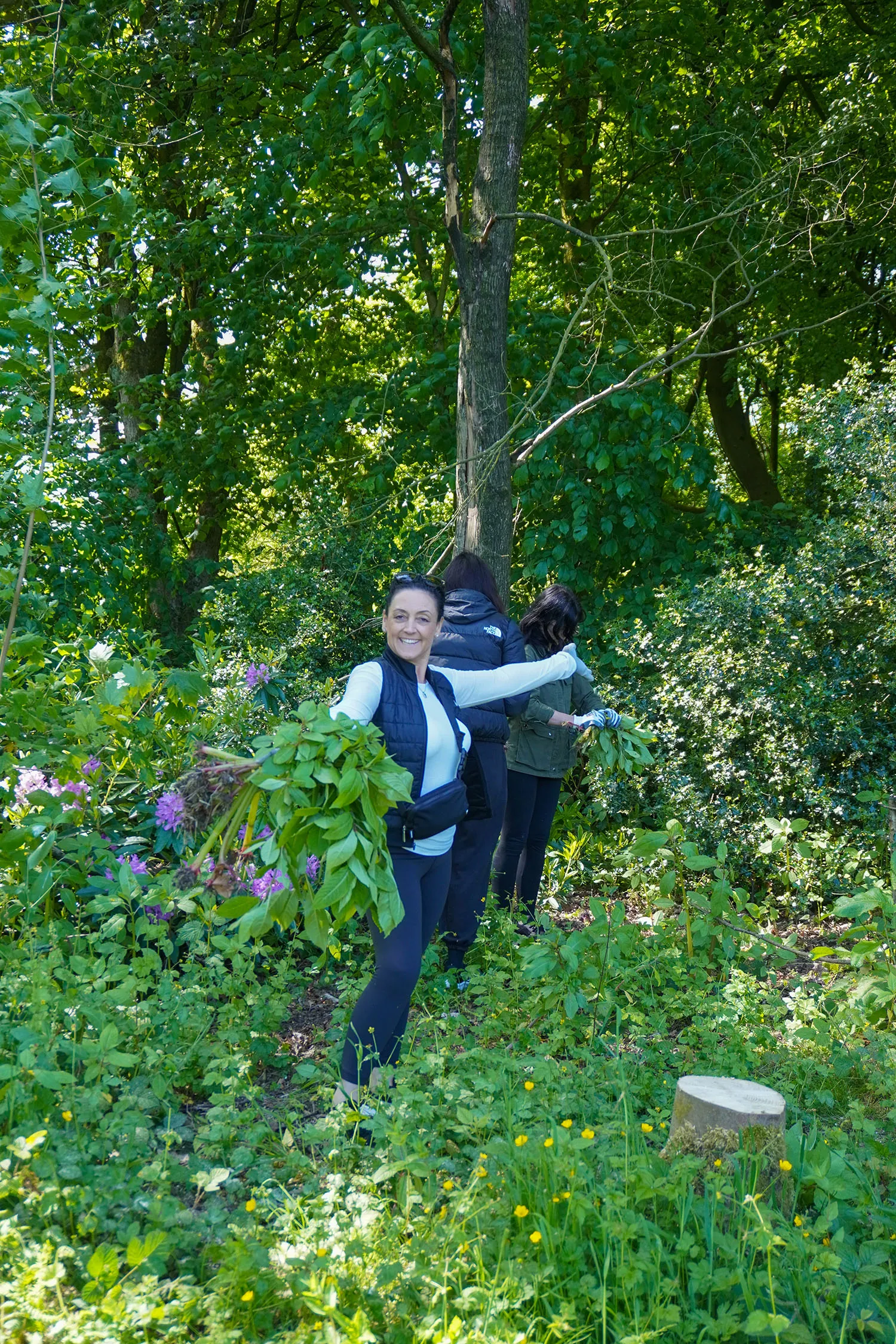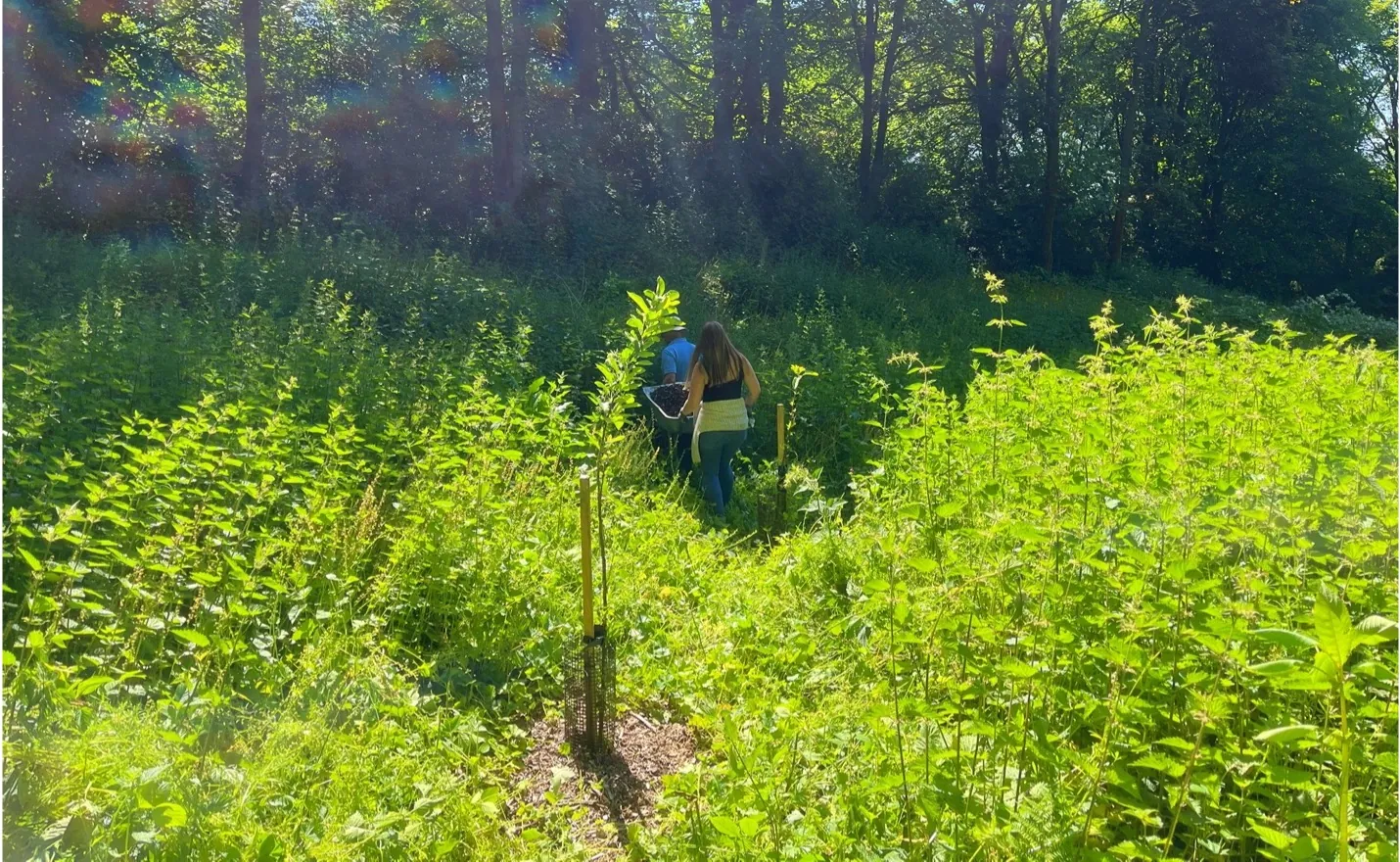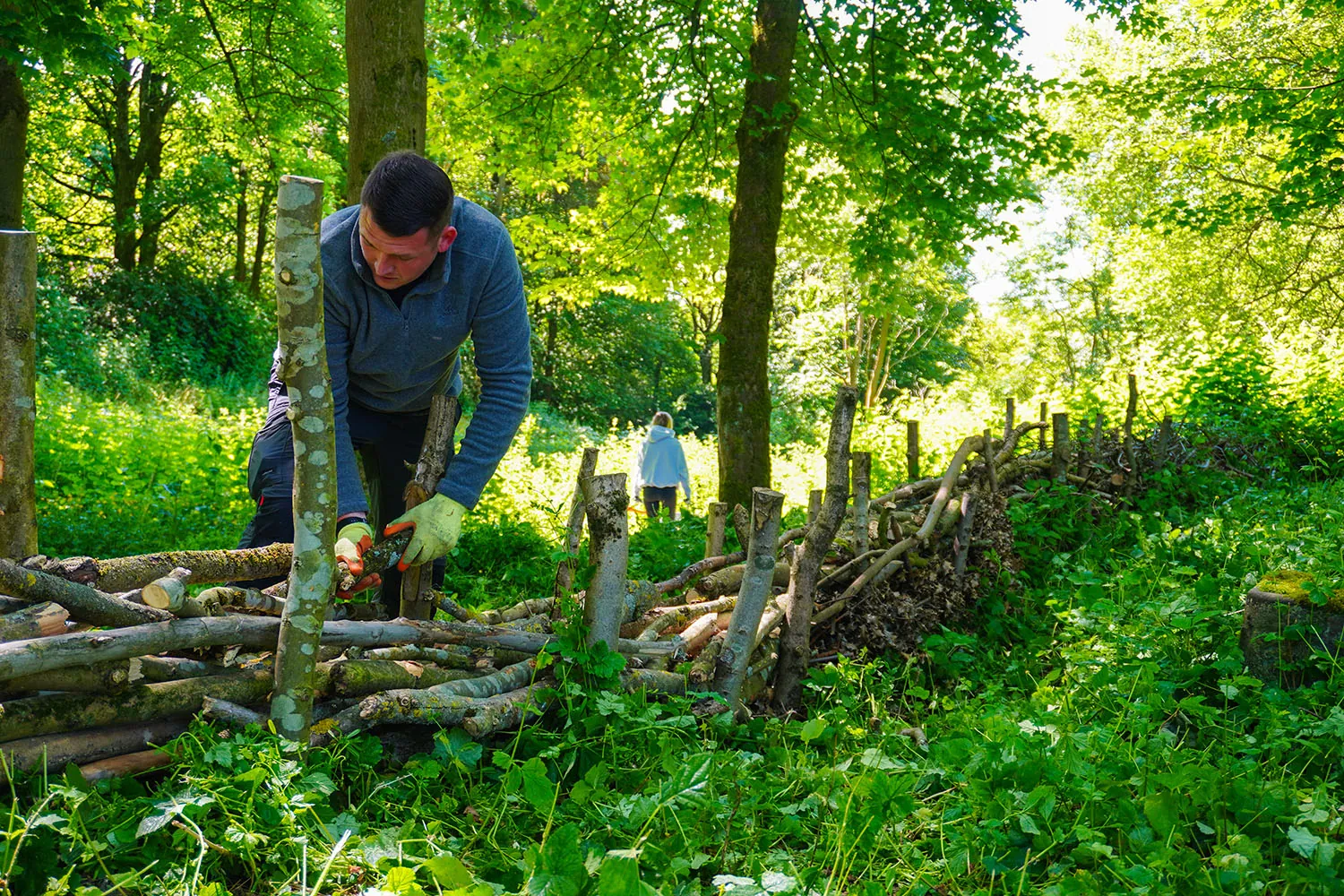As part of The Mailing Room’s environmental commitment, on Friday 2nd June twelve members of The Mailing Room staff, including all four of our Green Team, enjoyed an informative and rewarding environmental volunteering session at Philips Park, Prestwich.
Lead by our knowledgeable and passionate conservationists Paul Robinson – the Greenspace and Local Nature Reserves Officer of Bury Council, and Mark & Steven – both from the Friends of the Park group, we were introduced to our tasks and given a short history of the park before getting stuck in. The 113-acre park is located 6 miles south of our office in Bury and has a rich history with it previously being the private estate of 3 generations of the Philips family of Manchester-based manufacturers and merchants.The remnants of some of the estate’s features such as its conservatory and barns are still present, however unfortunately many have fallen into disrepair over the years due to the lack of resources to refurbish and maintain them.
Alongside having local historical significance, the park also maintains an important environmental and ecological significance. Much of the park is now a Local Nature Reserve (Prestwich Forest Park of which Philips Park is a part) and ‘Site of Biological Importance’ with ancient woodland still present as well as blankets of wildflowers.
While funding constraints have sadly prevented full upkeep of the estate and gardens, a local volunteer group (Friends of Philips Park) and the volunteers that they can recruit are restoring the gardens step by step and our actions on the day were an important part of their work. The group work alongside the local council and with any funding they can secure to restore and maintain footpaths, areas of natural woodland, former estate buildings, and a range of fauna and flora across the park.
On a glorious Friday morning our team were delighted to be able to assist the group’s activities by helping to remove invasive plant species in the form of Himalayan Balsam, protecting sapling trees using woodchip, and building dead hedges from fallen or removed tree branches.

Himalayan Balsam removal
A major issue affecting Philips Park, and parks across the country, is the prevalence of invasive plant species that overwhelm native species and can quickly spread due to its incredible seed dispersal capabilities – seedpods can shoot their seeds up to 7m (22ft) away.
With this knowledge in mind the team got to work and helped to pull up areas of the weed from its root before snapping the stems and trampling them underfoot to ensure new roots could not grow from any stems lying on the ground.
Armed with gloves and weed ‘slashers’ a team of eight quickly set to work and large areas of balsam were removed with only the occasional nettle sting dampening the mood. With our efforts we were swiftly moved on to further areas that needed clearing beyond our initial scope. As we did so were treated to a tour of the incredible gardens including what would have been the Philips family’s herb and vegetable garden.

Tree sapling protection
After removing large areas of balsam, the team transported woodchip from a collection area to a plantation of sapling trees where it was then spread around the trees’ base to protect it from damage. As well as protecting the tree from damage the woodchips also provide a barrier against weed growth as well as forming mulch and retaining & providing moisture to the tree as it grows.
On a glorious day our volunteers worked hard in teams of two to move around 20 wheelbarrows full of woodchip and protect eight sapling trees. Our work will be essential to giving these trees their best chance of survival and creating new ecosystems in the park.

Building dead hedges
The final task of three performed of the day was to assist in repurposing old branches and logs into ‘dead hedges’ that provide hiding places and nesting habitats for all sorts of creatures, as well as food for insects. Dead hedges are upright structures of woody, smaller cuttings woven between vertical stakes that are usually made from the sturdier offcut branches of trees.
The team worked with handsaws and loppers to prune old branches before placing them within the stake structure to create a dead hedge bordering a walking path.
As well as being refuges for wildlife, the hedges we helped to build are also a natural barrier for these walking paths to keep visitors away from areas of sapling trees and wildflowers that the Friends of the Park are attempting to reintroduce.
Following our morning’s volunteering we were given a tour of some more of the park thanks to Steven from the Friends of the Park group. Steven showed us the former areas of the Philips estate including the stables, kitchen gardens and flower beds – all of which we greatly enjoyed seeing and gave us some ideas for actions that we could assist with in our future volunteering trips.
Once again, we would like to extend our thanks to Paul, Mark, and Steven for accommodating us on the day and providing such a fantastic volunteering experience. We are sure to be back soon so watch this space for more updates on our environmental volunteering efforts at Philips Park!

